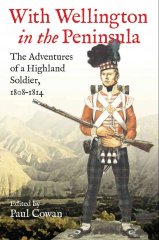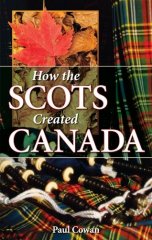Home
Home
Fighting Men 1746
Shortly after the Battle of Culloden in 1746 the British Government's main agent in the Highlands, Duncan Forbes, calculated the potential fighting strength commanded by the various clan chiefs.
Argyll 3000
Breadalbane 1000
Lochnell and other Campbell Chiefs 1000
Macleans 500
Maclachlans 300
Stewarts of Appin 300
Macdougalls 200
Stewarts of Grandtully 300
Clan Gregor 700
Duke of Atholl 3000
Farquharsons 500
Duke of Gordon 300
Grant of Grant 850
Macintosh 800
Macphersons 400
Frasers 900
Grant of Glenmoriston 150
Chisholms 200
Duke of Perth 300
Seaforth 1000
Cromarty, Scatwell,Gairloch & other Mackenzies 1500
Menzies 300
Munros 300
Rosses 500
Sutherland 2000
Mackays 800
Sinclairs 1100
Macdonald of Sleat 700
Macdonald of Clanranald 700
Macdonnell of Glengarry 500
Macdonnell of Keppoch 300
Macdonald of Glencoe 130
Robertsons 200
Camerons 800
Mackinnon 200
Macleod 700
Duke of Montrose, Earls of Bute & Moray
Macfarlanes, Colquhouns, Lamonts, Macneils
of Barra, Macnabs, Macnaughtons, etc, etc 5,600
______
31,930
SCOTTISH MILITARY DISASTERS INTERVIEW
How did you come to write this book?
I used to be a journalist. I was doing some research for a magazine article about some battles involving Scottish troops and I noticed that the times when things went wrong were often ignored in many mainstream histories or dismissed in a sentence. I found myself wanting to know more and the more I found out the more fascinated I became.
Scottish Military Disasters - Synopsis
1. Mons Graupius - 84 AD - The first recorded battle in Scottish history. Also the first recorded military disaster.
2. Falkirk - 1298 -William Wallace’s brief day in the sun is ended when he comes up against Edward, the Hammer of the Scots.
Scottish Military Disasters Illustrations
Some bonus material for those of you who bought the book: illustrations which were not used. Press this button - Battle Maps - to see the maps specially prepared for the book but ultimately not included.
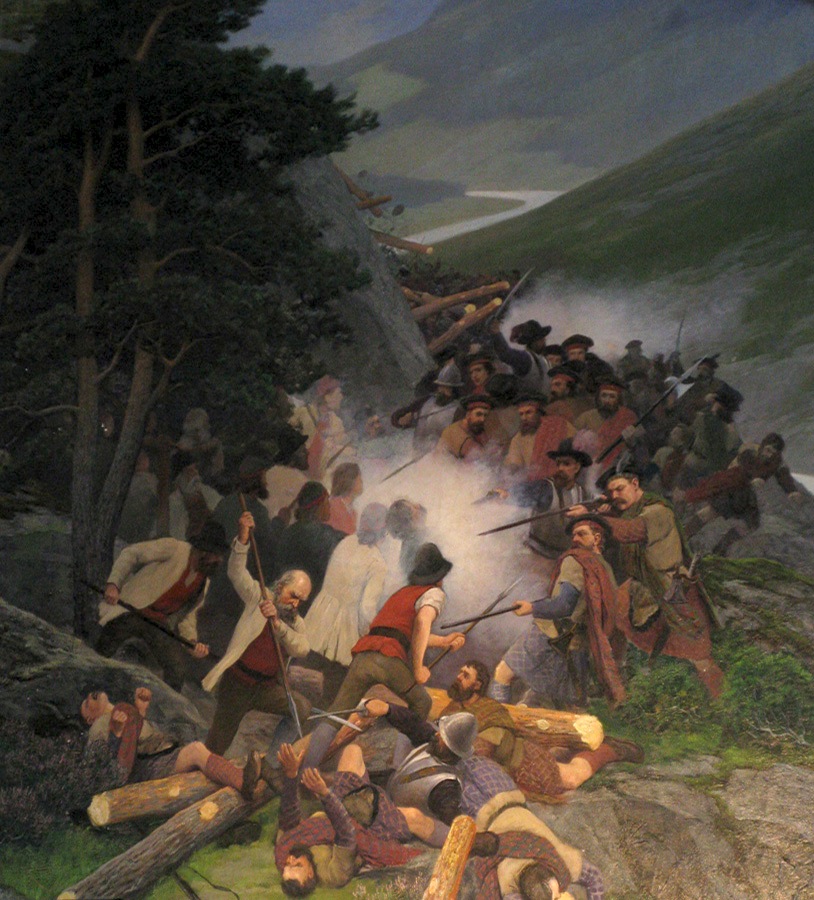
The Norwegians and Scots get to grips with each other in this perhaps
rather fanciful portrayal of the Battle of Kringen in 1612. Chapter 6.
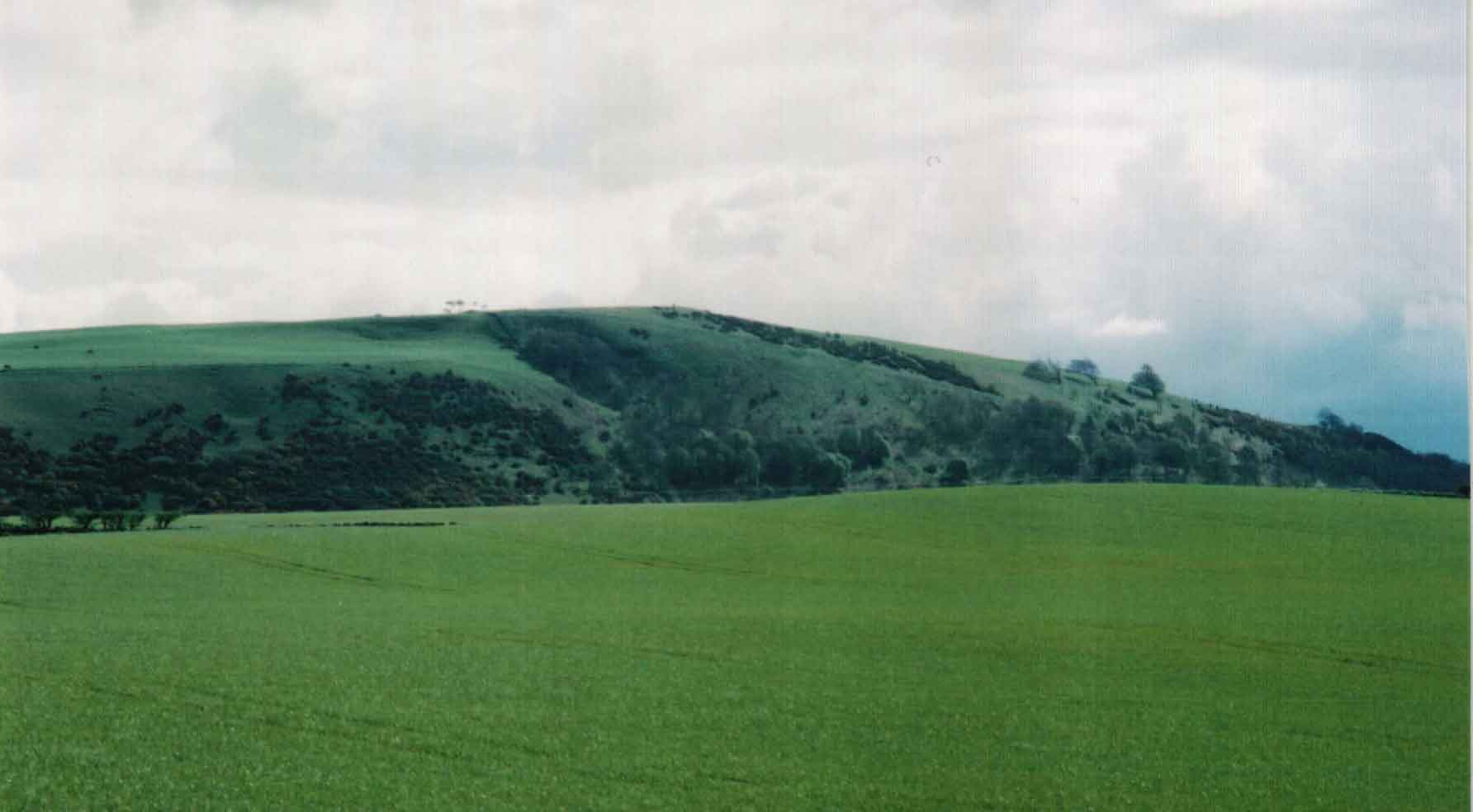
The Scots Army left a strong position on Doon Hill to fight and suffered a humiliating defeat at
the hands of the English under Oliver Cromwell in 1650. Chapter 7.
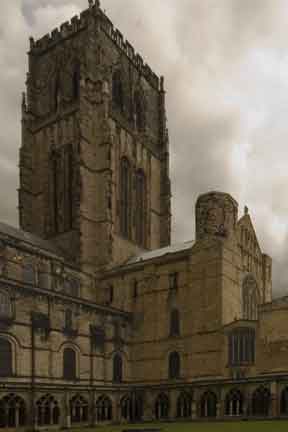
Around 3,000 Scots captured at Dunbar were imprisoned in Durham Cathedral. More than of them died in captivity and the survivors were sold into slavery or to the French Army.
Opinion
I don't know how many memoirs there are from the First World War written by Germans. But I'd be interested to see what they have to say about killing prisoners. I've just finished reading a book, first published in 1929, in which a variety of British servicemen recounted their experiences during the war. What struck me was that more than half of accounts mentioning the murder of surrendered or surrendering Germans were from former members of Highland regiments.
One account detailed how during the Battle of Loos in 1915 a platoon of Highlanders found about 20 Germans at their mercy in a captured trench. The Germans, who wounded some of the Highlanders as they stormed the trench, begged for mercy. Then one of the Scots shouted “Remember the Lusitania” and the Germans were slaughtered. The deaths of almost 1,200 civilians when a German submarine torpedoed the ocean liner were widely regarded at the time as a war crime. Another member of a Highland regiment told how that no German was left alive after his unit took a German trench at Ypres in 1917. In another book, a private in the one of the Highland regiments also recalled the murder of prisoners at Loos.
Now, it could be that Scottish soldiers were more honest about whether they killed surrendered Germans. Or it could be that they were more likely to kill prisoners than most other British soldiers? The Canadians and Australians were also notorious for killing Germans who could have been easily captured.
About a year ago, while working on a companion volume to Scottish Military Disasters, I was going through some battalion histories from the First World War. Most did not explicitly mention the killing of surrendering Germans but simply noted with satisfaction that there were no survivors from such-and -such a German machinegun post after had been over-run. But the history of one of the Glasgow battalions was not so coy. The history tells the story of an officer of the Worcestershire Regiment who asked a sergeant from the Glasgow unit how many German prisoners he’d taken during a recent battle. “Prisoners,” replied the sergeant. “None, my ammunition's no done yet.”
The Scots who fought in the Second World War were just as honest as those from the First when it came to talking about killing prisoners. Seaforth Highlander Sgt. Carnduff said that after the Battle of Alamein a total of nine Germans found huddled in the bottom of trenches by-passed during the 51st Highland Division’s advance had been killed by dropping anti-tank mines on them. A soldier from the 15th Scottish Division admitted that during the fighting in Normandy after D-Day his unit soon stopped taking prisoners. “Any German who tries to surrender is a brave man; we just shoot them then and there, with their hands up,” he said. “There’s nothing to choose between the British and the Germans as regards atrocities …” The soldier added that shortly after landing in France, his Sergeant Major had been relieving some Germans of their valuables when a Canadian soldier sprayed the prisoners with his sten gun. The Sergeant Major was hit in the stomach.
Online
We have 24 guests and no members online

